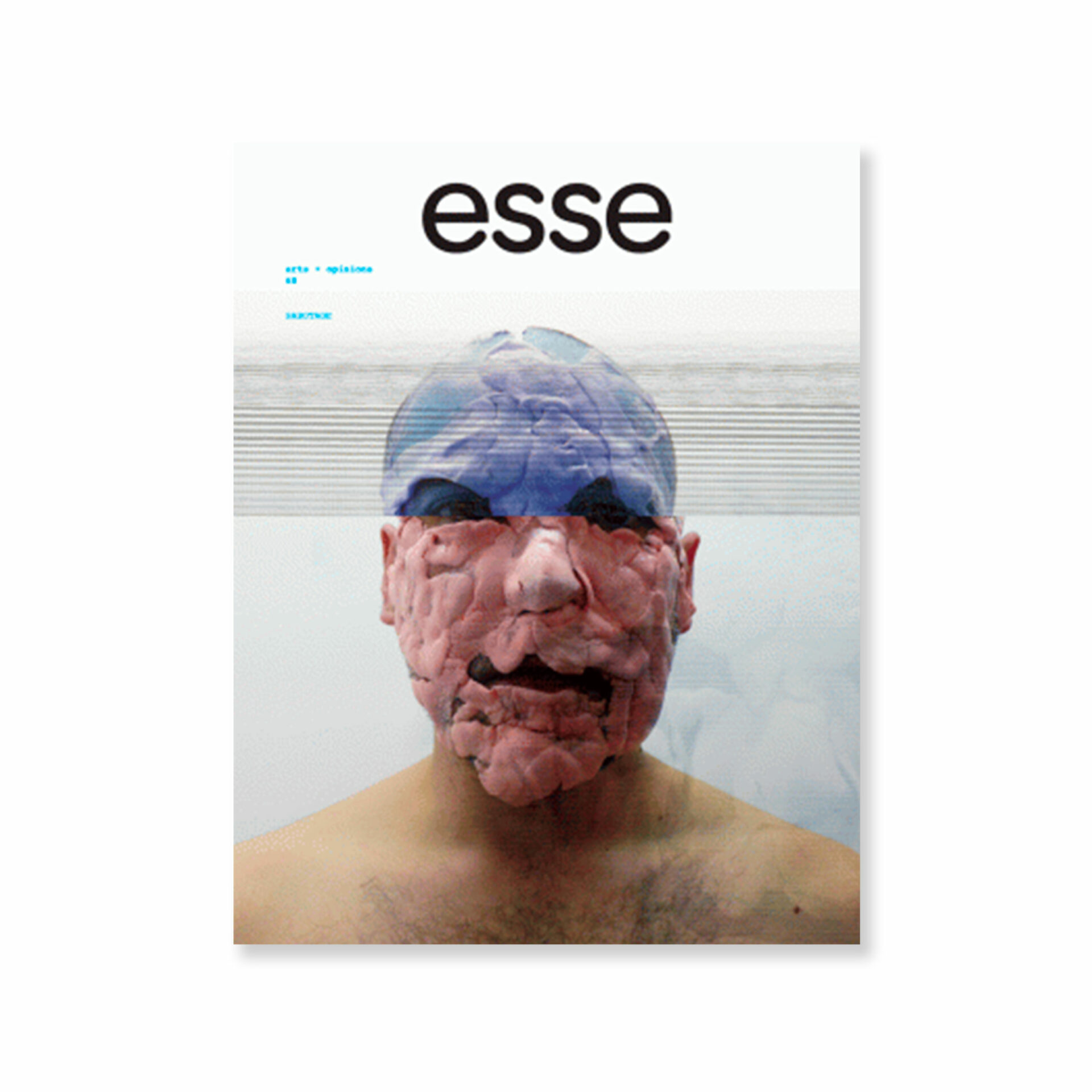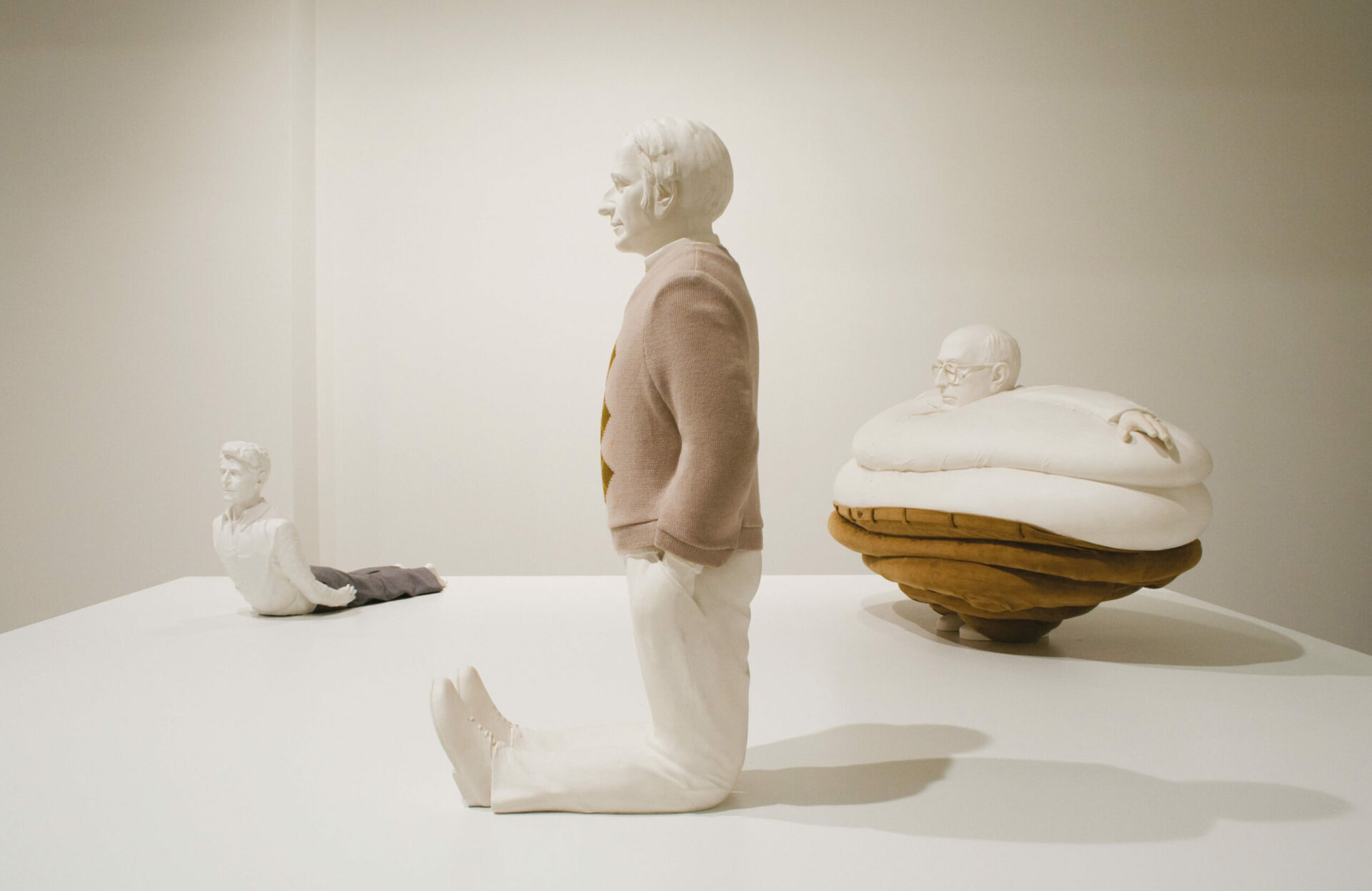
Photo: Louis-Philippe Côté, courtesy Galerie de l'UQAM, Montréal
Désespéré/Desperate held at the Galerie de l’UQAM in the fall of 2008 was not only Erwin Wurm’s first exhibition in Canada, it was also the first time that a show has been organized entirely on the basis of philosophical aspects in the sculptor’s work.1 1 - This telephone interview was conducted between Montreal and Vienna on September 20, 2008. Translation from the German (Mr. Wurm answered several questions entirely or partially in German) by Bernard A. Schütze. This philosophical selection — a brainchild of the exhibition’s curator Patrice Duhamel2 2 - The curator of Desperate Patrice Duhamel passed away at the age of thirty-eight shortly after the show’s opening in September 2008. This interview is dedicated to his memory. — is the guiding thread of this conversation in which philosophy and sculpture overlap and intertwine. On one hand, Erwin Wurm reveals the importance of philosophy in structuring his perception of things, while on the other he discusses how sculpture can serve as a means to take a novel look at philosophers and to concretely examine philosophical notions such as freewill, time and the ridiculous.
Bernard A. Schütze Your show Desperate in Montreal consists of works that focus on the philosophical. To my knowledge, this is the first time your work has been presented exclusively along these lines. Given this context, what role does philosophy play in your work and how does it take shape in your artistic practice?
Erwin Wurm I’m generally very interested in philosophy, but I treat philosophical themes as a dilettante, as someone who views it as nourishment to help him master life. In this sense I don’t see philosophical thought and thinking as something lofty, that places me above others, but rather as something that helps me find my way in reality, or something that helps me construct my reality. I do not work with philosophy on a constant basis but there are always certain thinkers who motivate me to question reality in new ways. Initially these consisted of Sigmund Freud, an important thinker even if he is not a philosopher, and Wittgenstein. Both are from Vienna, both are Austrians, both are Jews, and both emerged in this problematic society based on 800 years of monarchy and 2,000 years of catholic tradition. There are of course other famous thinkers such as Descartes, who has never ceased to interest me because he claimed that reality is a tricky matter: I can see reality in my way and you in yours, but both of us can never be certain of each other’s existence or of the existence of that which we see. This is an underlying theme of my Tell (2007-08) video that was in the Montreal show.
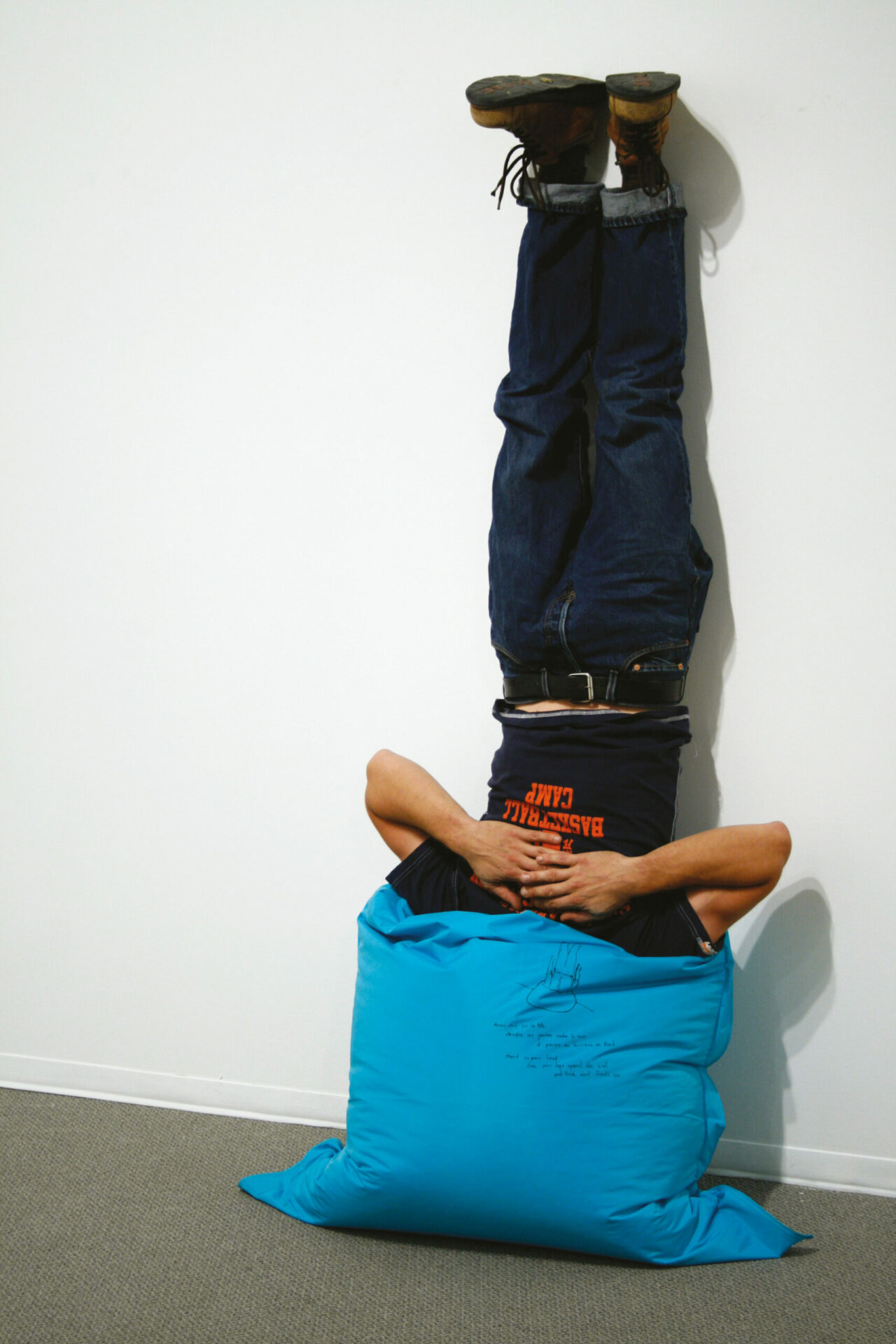
Freud’s Ass, 2004 © Erwin Wurm / SODRAC 2009.
Photo: David Jacques, courtesy Galerie de l’UQAM, Montréal
B.A.S. In the sculpture Wittgenstein’s Space Warp (2005) you represent the philosopher engaged in a cobra yoga position with a rather stern expression on his face. This work made me think of a comment Wittgenstein once made: “I don’t know why we are here but I’m pretty sure that it is not in order to amuse ourselves.”3 3 - Free translation from a unpublished German text. Given your penchant for humor and irony, how do you respond to your compatriot’s words?
E.W. This is such a Viennese statement. It shows the whole problematic and drama of Vienna. People are constantly complaining and bringing out the negative, and this always leads one back to an infatuation with death. It’s interesting that a thinker as logically inclined as Wittgenstein continues to fall, or walk into this trap.
B.A.S. With the sculpture Adorno as Olivier Hardy in the Bohemian Girl (1936) and the Burden of Desperation (2006), you bring us a bloated depiction of Adorno that uses the burlesque to comment on the thinker’s heavy-handed seriousness. What led you to sculpt Adorno’s figure in this way?
E.W. Adorno is the main representative of a generation who stated that art is something serious, something sacred, and something lofty. It is he who said that poetry is not possible after the Holocaust. I think that this is quite wrong. The horror of the Holocaust should only make us more sensitive to pœtry and literature. He denied this. There is no place for cynicism with him. It’s all about serious truths and these are always deep and can only be expressed unsmilingly. That means you can only talk about difficult issues with a serious face. I believe that one can talk about them with both cynicism and a certain measure of humor, which also makes them easier to bear. The language of these ladies and gentlemen is pathos, and pathos is something that I refuse as an artistic direction.
B.A.S. Sould one consider the third sculpture, Deleuze Kneeling Down (2006), in this philosopher “triptych,” as an antidote to this pathos, since Deleuze represents a philosophy of immanence that celebrates the joyous, as well as the nonsensical and paradoxical?
E.W. Yes, this is true. But the sculpture is also quite ridiculous, simply because Deleuze is kneeling in the wrong direction. The ridiculous is something I work with a lot; it’s part of all of us, everybody has this part and nobody wants to accept it. Deleuze holding his hands by the pockets is not so much an allusion to prayer as it is to the figure of the little soldier, who also has his hands in this position. I would say a soldier of philosophy, because he was very strict in his ideas, and if people are willing to accept his ideas, they have to follow his rules.
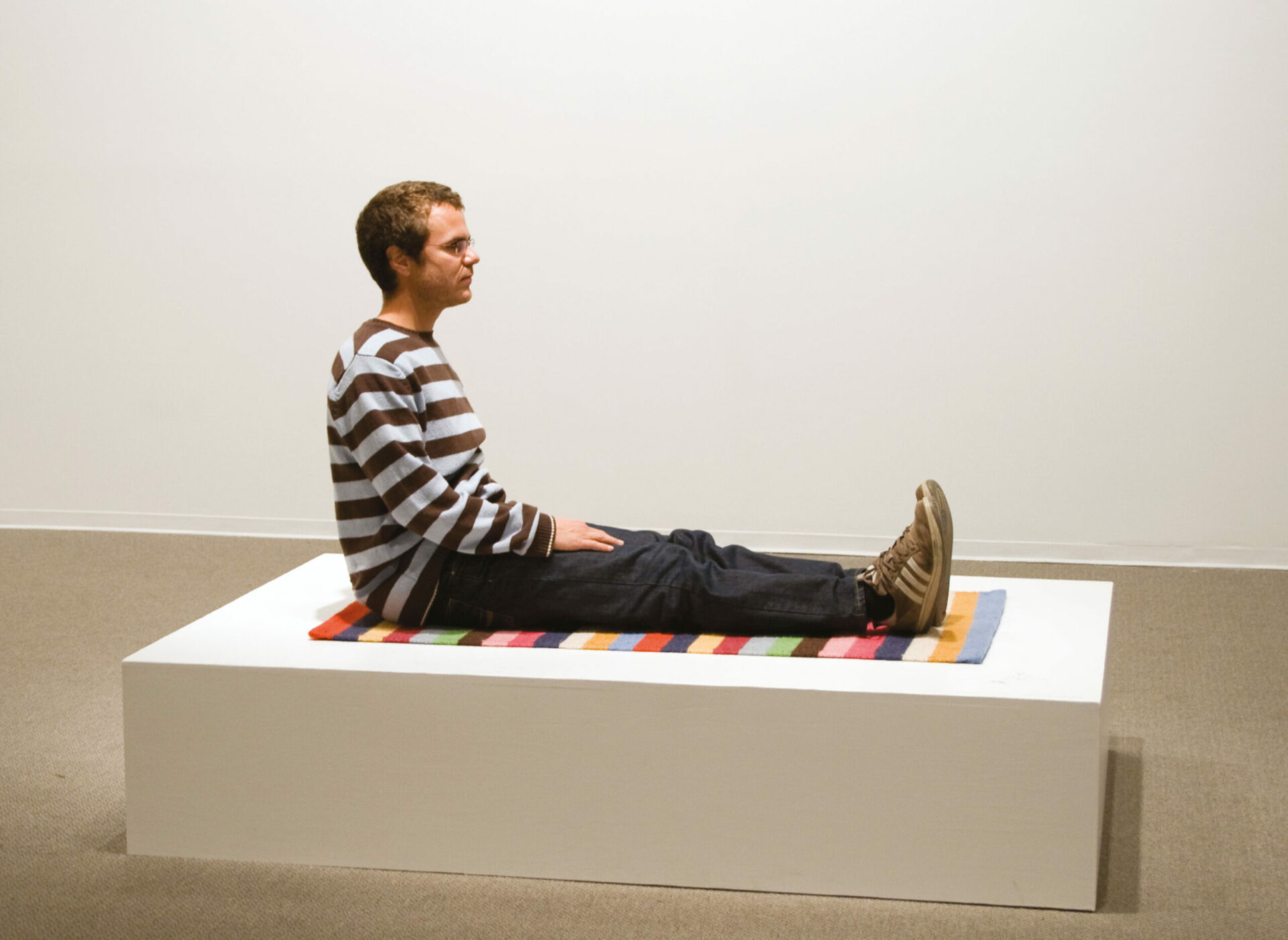
Hold Your Breath and Think of Spinoza, 1998 © Erwin Wurm / SODRAC 2009.
Photo: Louis-Philippe Côté, courtesy Galerie de l’UQAM, Montréal
B.A.S. Your sculptures often engage the viewer’s body in relation to a field of thought. For instance in the piece Hold Your Breath and Think of Spinoza (1998) you ask people to lie on a carpet and perform the instruction in the title. How do you view this crossover between bodily posture and philosophical thought?
E.W. Quite some time ago, I asked myself the question if it’s at all possible to represent embarrassment, ridicule, desire, thinking or freedom as sculptures — Can one make sculptures out of concepts like this? I’ve tried various possibilities. This is how I came up with the one-minute sculptures, which bring together the notion of the everyday on the one hand (ordinary objects/situations), and lofty philosophical or literary concepts on the other. In this way I tried to bring these two things together through the viewer’s participation.
B.A.S. The combination of instructions (drawings and sentences) and of engaging the viewer in often absurd or unusual postures is a common thread in many of your one-minute sculptures. There is something odd about following instructions such as in “Stand on your head, lean your legs against the wall and think about Freud’s ass,” for the one-minute sculpture Freud’s Ass (2004), and yet viewers readily play the game and fulfill “your” wishes. To what extent are you trying to make one aware of the absurdity of following instructions?
E.W. This is an important point. You see the instructions and drawings and you’re invited to participate and realize the piece, and by doing this, you’re letting yourself be manipulated by someone else’s wishes. This means that you can abandon your conscious part and let yourself be stupid. But it isn’t really you, because I am the one who said you should do this, and you would certainly not take up such a stupid position all by yourself. In fact, you are just following my orders, and this is exactly the problematic regarding students, soldiers or shoppers, etc. — people just fulfilling what somebody else asked them to do and relinquishing their conscious choices.
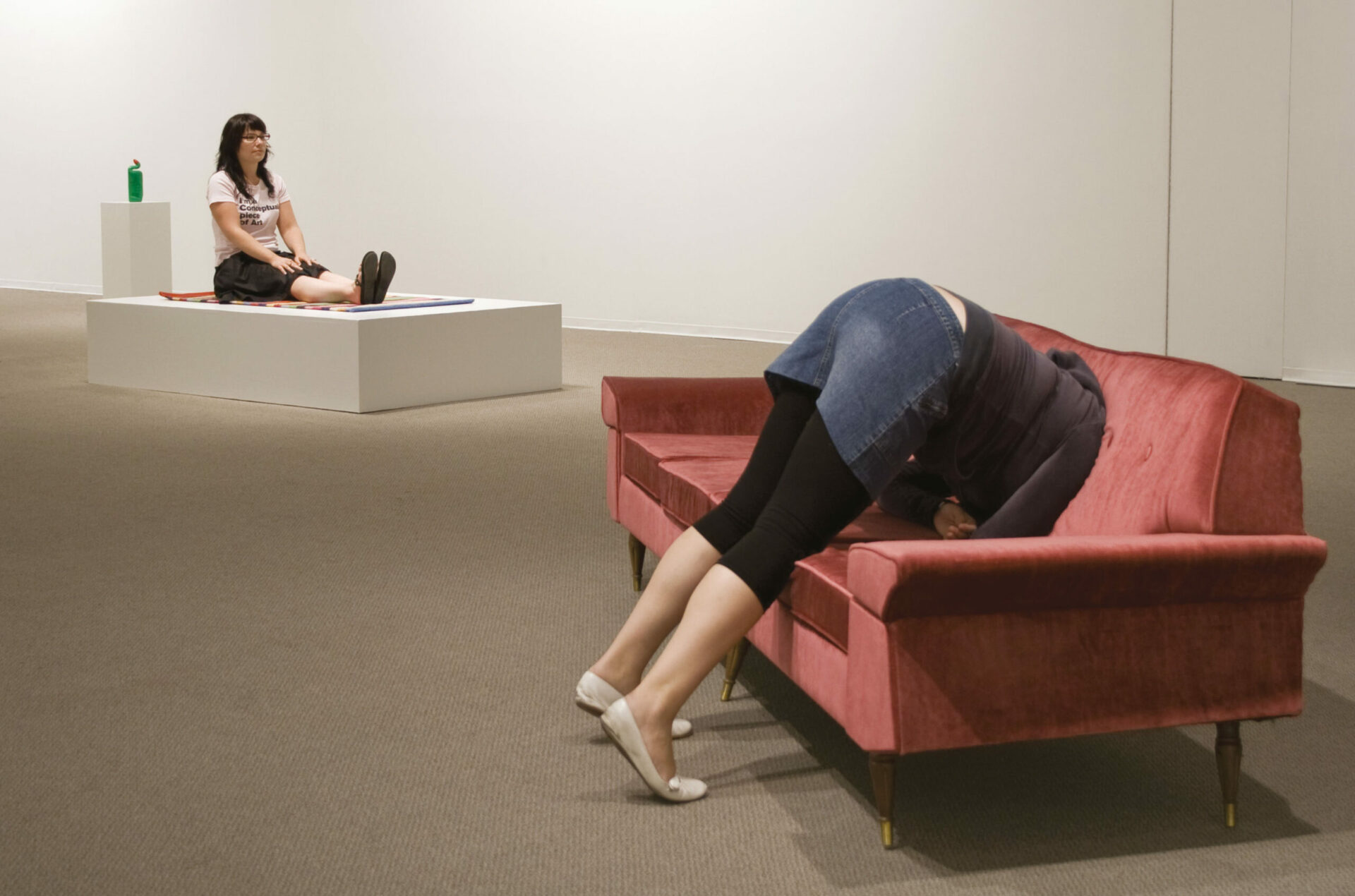
Exhibition view, Désespéré / Desperate, Galerie de l’UQAM,
2008 © Erwin Wurm / SODRAC 2009.
Photo: Louis-Philippe Côté, courtesy Galerie de l’UQAM, Montréal
B.A.S. There is part in your video Tell (2007-08)that reminds me of a scene in the movie Pulp Fiction, the one where John Travolta talks about what they call a Whopper in France. Is this a reference?
E.W. Yes, yes, [laughing] it’s a direct “citation.” In the same video there is also a camera movement that I used from that film. I very much enjoy comic books, pop culture and science fiction and this reference draws on that. It’s like a game within a game.
B.A.S. In your videos you make objects do things that are not possible in the physical 3D world. With this in mind, do you see the use of video as a means of expanding sculptural language?
E.W. That’s exactly how I came to the performative part in my work. Time is such an important factor. When you look at classical culture you need time to grasp it, you need time to walk around and take it in. For instance, the trigger for the car going up the building facade in the Tell piece was a 3D sculpture I did several years ago of a truck with its backside leaning up a wall (Truck, 2005). The result was somewhat unsatisfying, and this led me to explore the idea by carrying it out as an action in time through video. Also, for a long time I have been interested in the relation between movement and sculpture/stillness; in other words if it’s possible to prolong movement so long that it slows down and turns into sculpture. It’s this question that recently led me to do another video called Stand (2008), for which I had a man hypnotized to stand still in a field for fourteen hours. It’s wild to see the changes he went through, both in body and in mind. Again this is very much a sculptural thing that requires a time-based medium like video to take shape. I’m going to continue with video, though this does not mean that I’m only doing video now, not at all. I’m still doing sculpture, drawing and so on… this is just another way, another door that I try to open.
